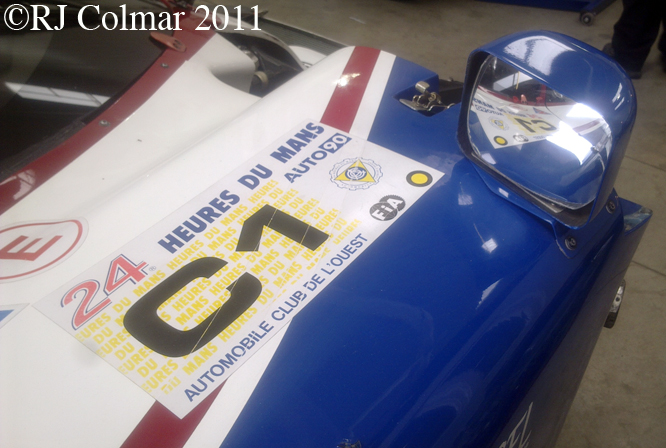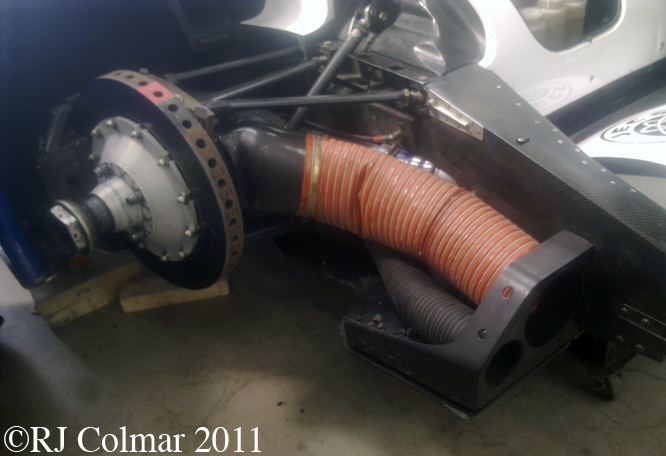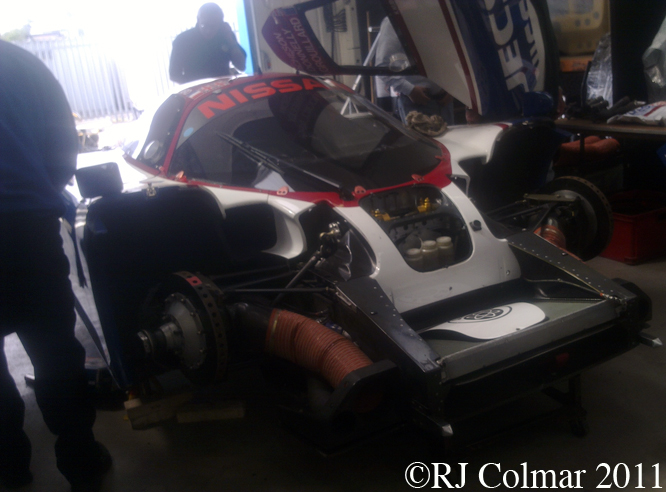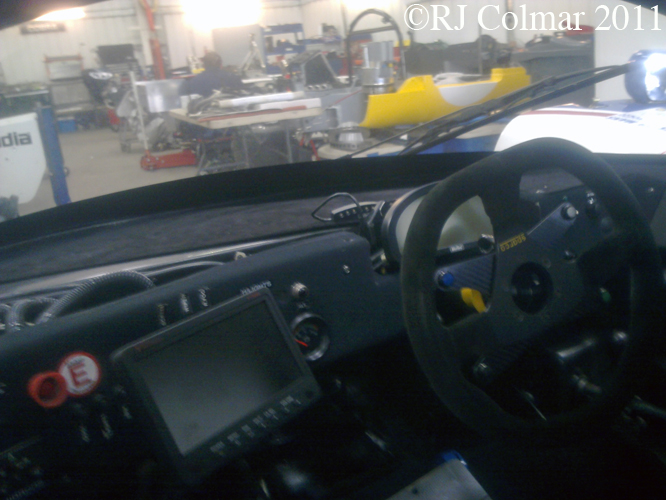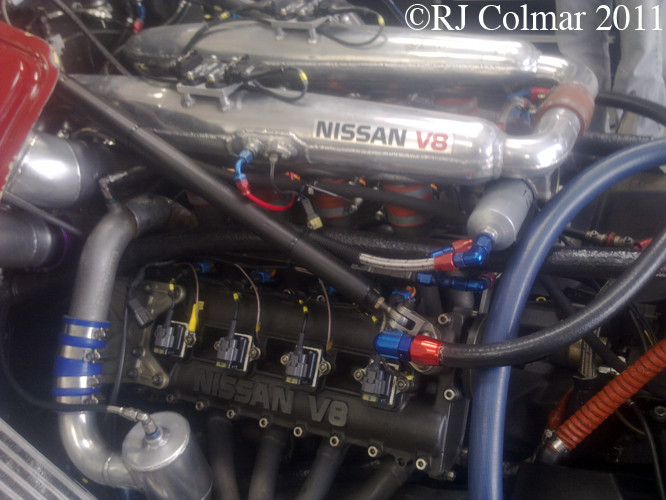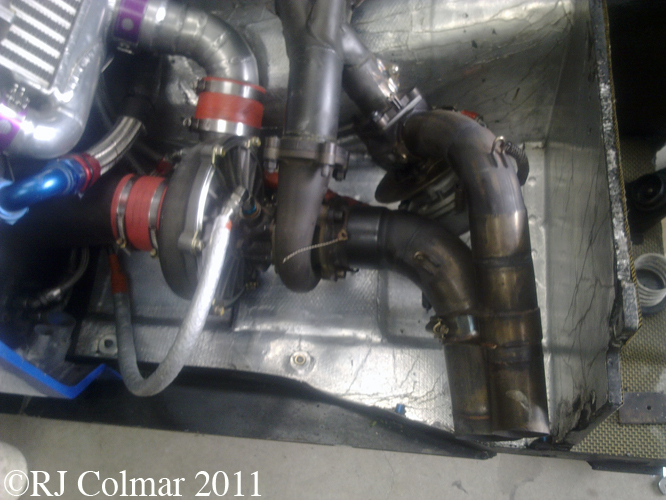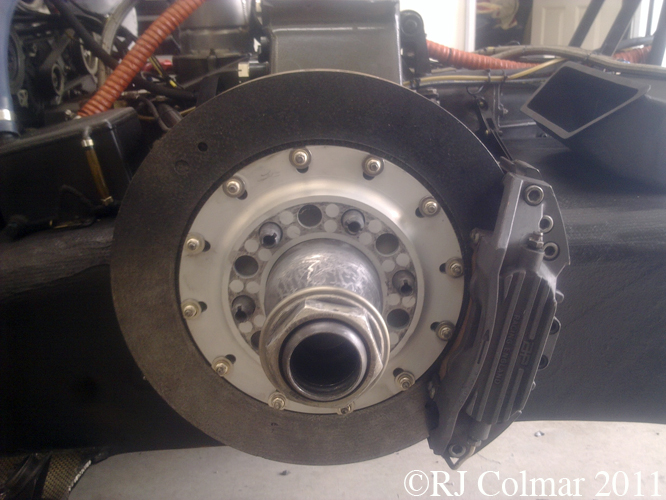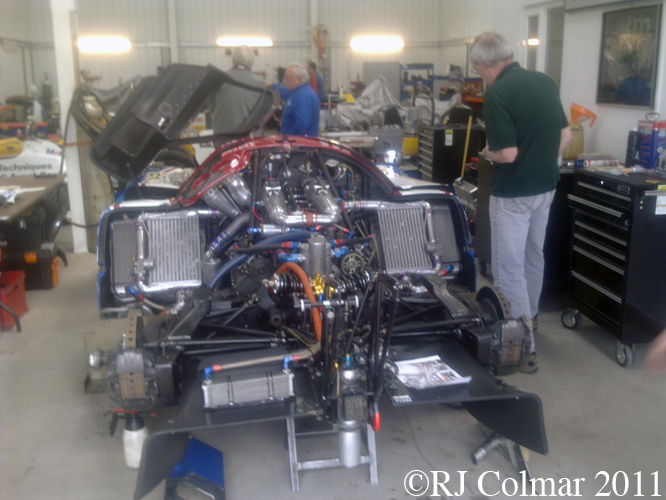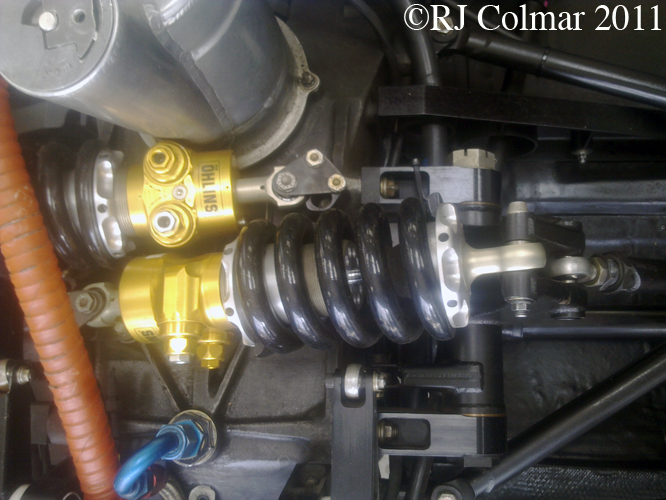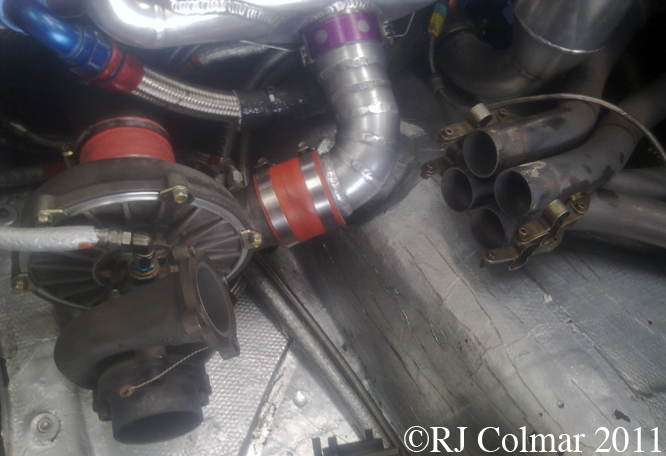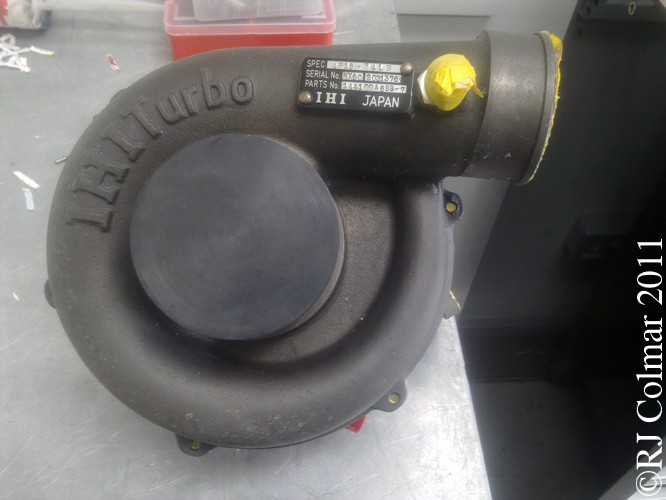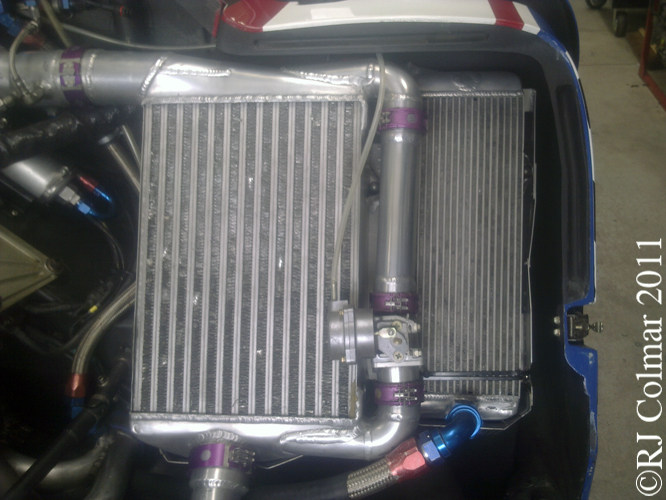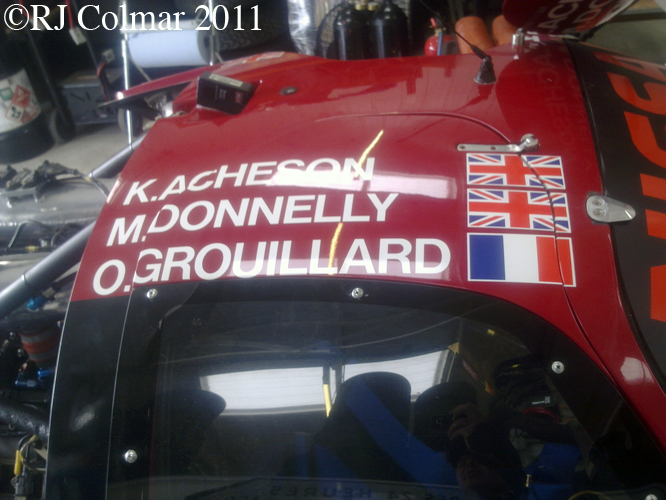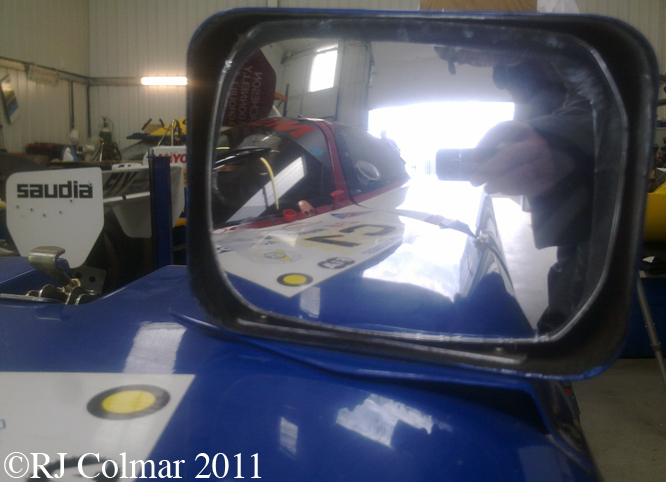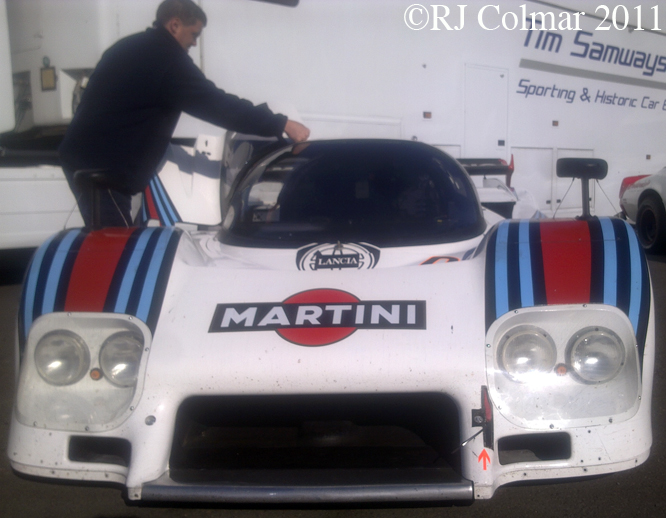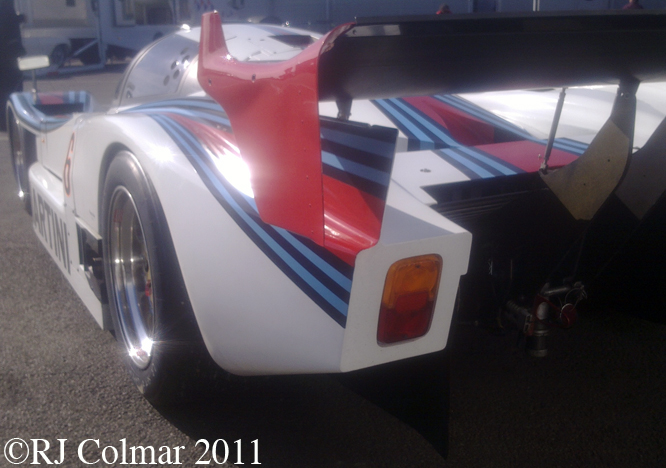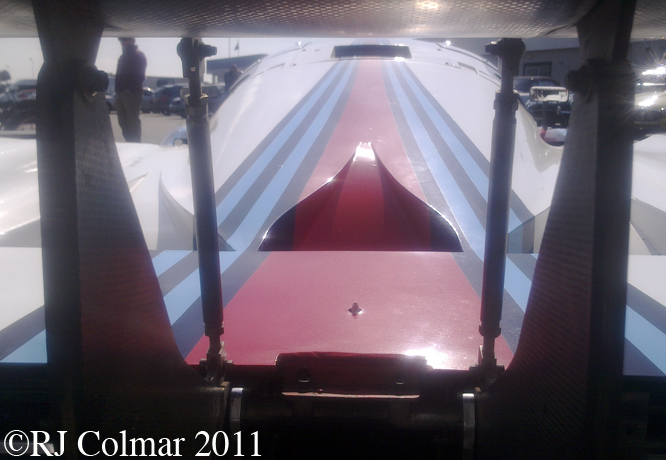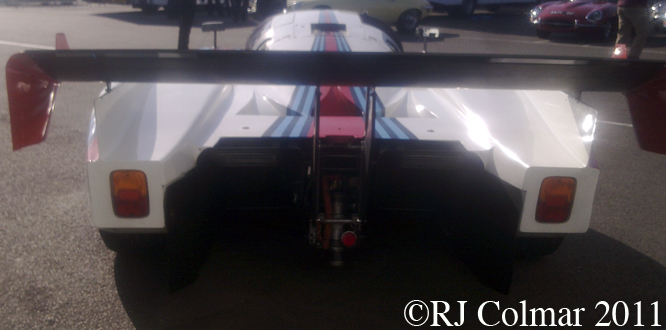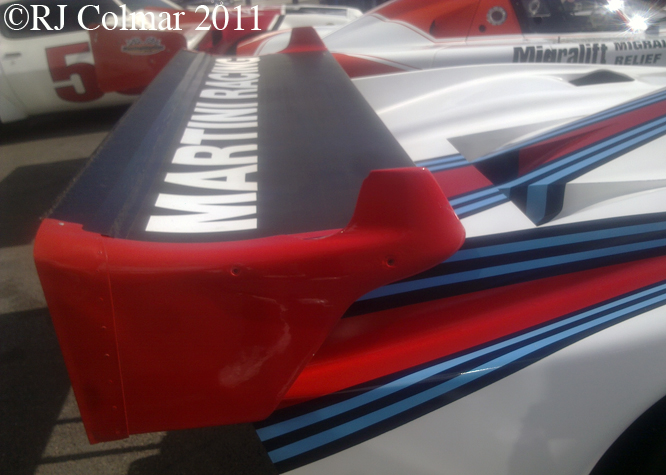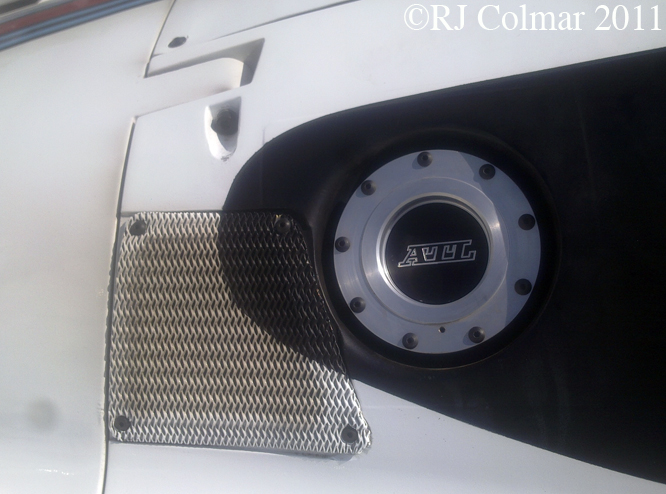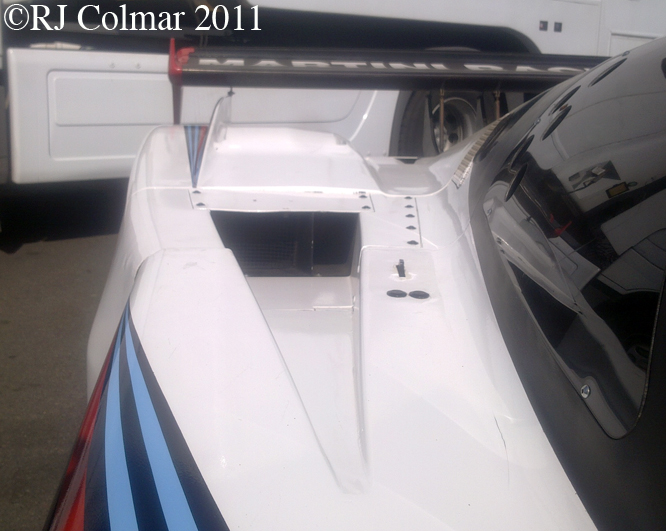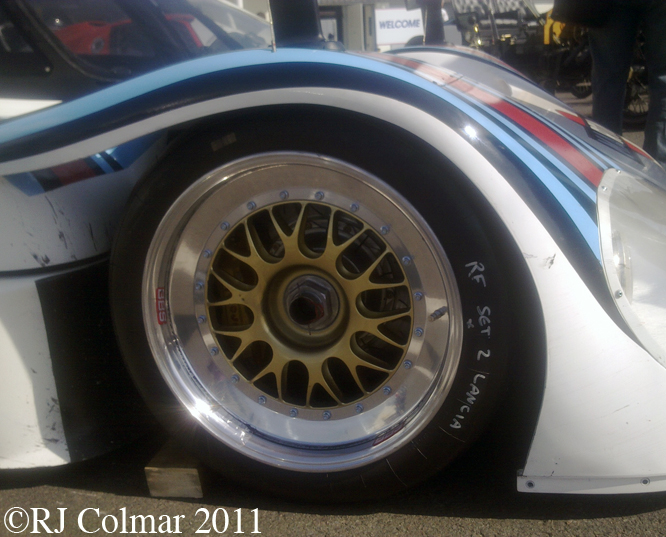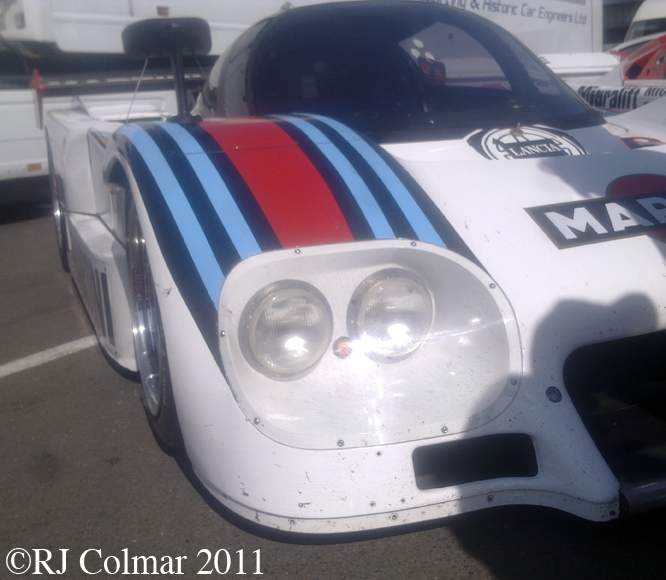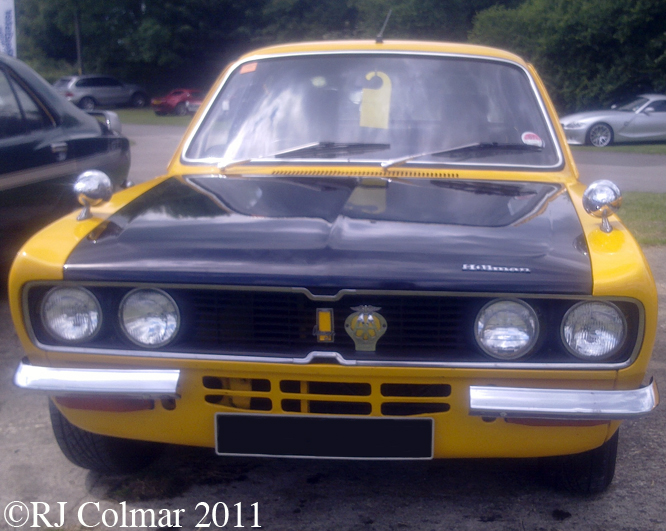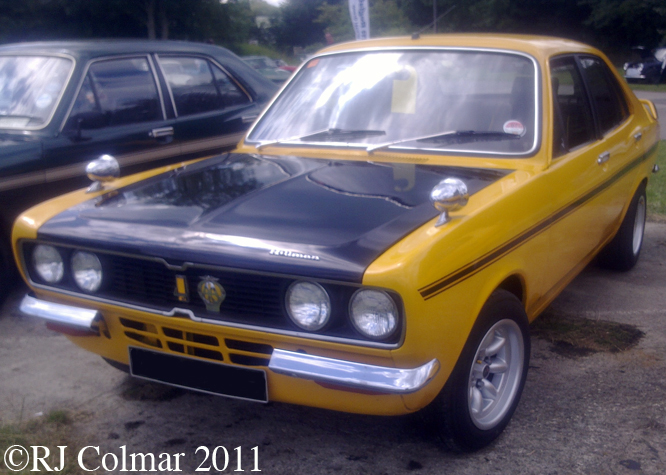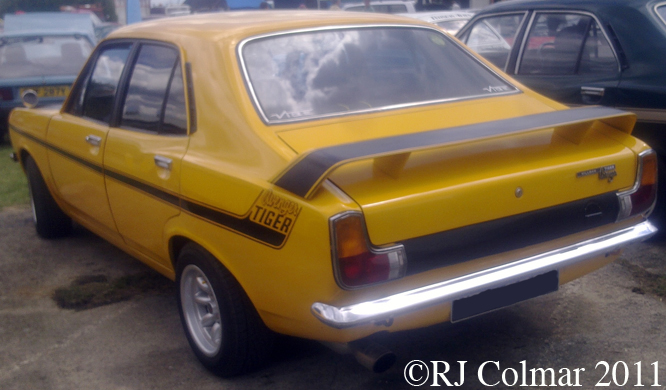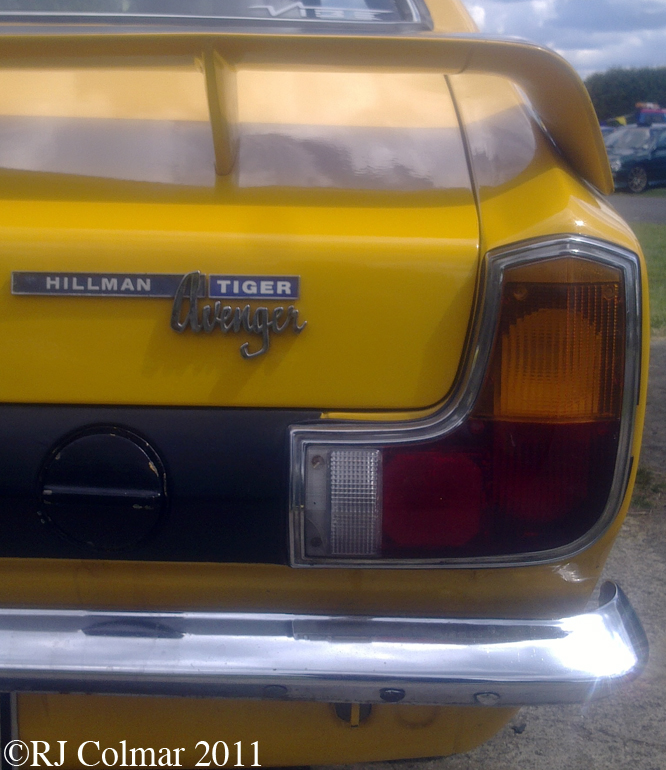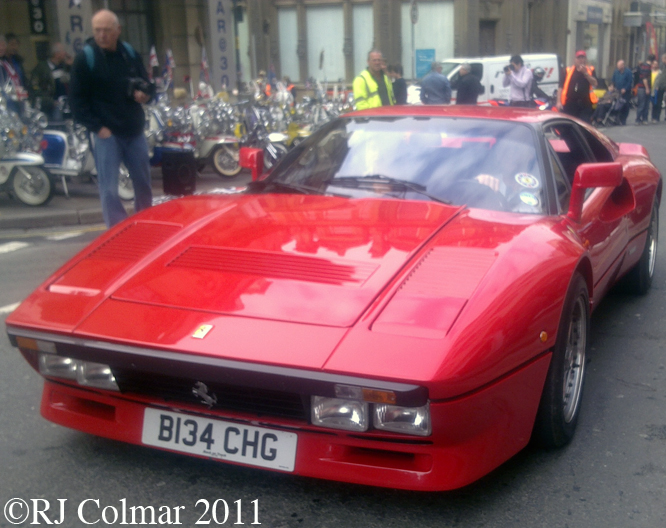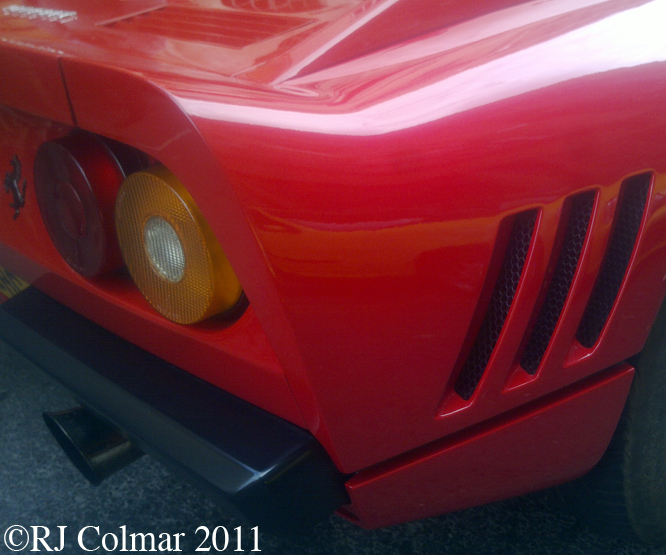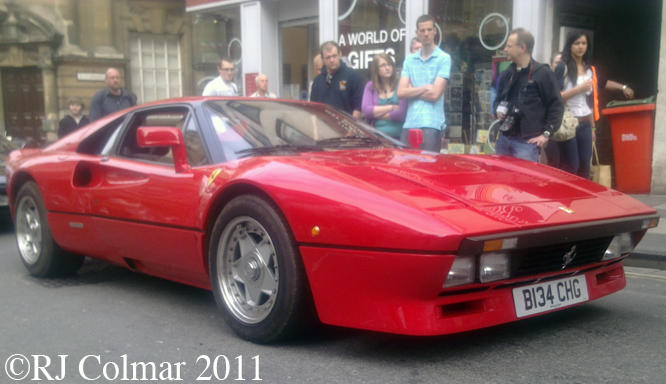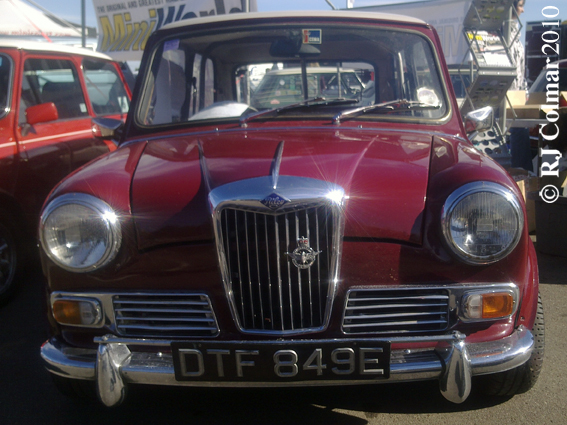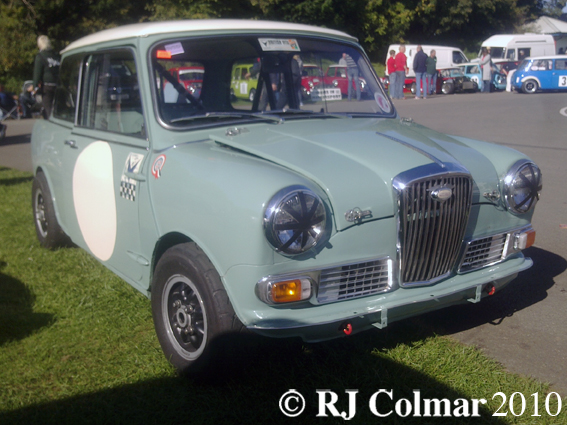Like the Lancia LC2 seen in Monday’s post the Nissan R90CK seen here at Colin Bennett’s CGA Engineering Workshop is scheduled to appear at the Silverstone Classic for the Group C race next weekend.
Three serious works teams gathered to contend the 24 hours of Le Mans in 1990, Jaguar with three cars were the eventual winners, Toyota with three cars did not really figure, but Nissan with 5 front line R90CK cars became the first Japanese manufacturer to sit on pole position at this endurance classic.
The Nissan R90CK’s were built around Lola T90/10 chassis
and prepared for the World Endurance Championship by Nissan Motorsports Europe.
This particular vehicle has a rear facing camera connected to the screen seen here to aid reversing. Mark Blundell’s pole winning 3m 27s Le Mans qualifying lap immortalised with cockpit cam can be seen on this mind boggling youtube clip.
It is said that Mark had over 1000 hp available during his qualification lap from his 3.5 litre / 213 cui Nissan VRH35 V8 motor,
thanks to a ceased turbo waste gate.
Mark recorded a top speed of 226.9 mph on the Mulsanne Straight speed strap between the two newly installed chicanes a record that apparently still stands.
Six months after the unlikely Mazda victory at Le Mans in 1991, a NISMO version of the Lola T90/10 the Nissan R91CP won the 1992 Daytona 24 hour race in the hands of Masahiro Hasemi, Kazuyoshi Hoshino and Toshio Suzuki.
At the end of the 1990 season Nissan withdrew from the World Prototype Sportscar Championship but continued to develop the RC90CK cars for the All Japan Sports Prototype Championship which the manufacturer won in 1990,’91 and ’92.
This particular car is now owned by Katsu Kubota.
While there is still a good supply of parts for these vehicles
the cost of running one is expensive.
In 1990 the car driven by Kenny Acheson, Olivier Grouillard and Martin Donnelly
qualified in 5th place at Le Mans but was eliminated on the opening lap with a gearbox problem.
I shall look forward to seeing this car in action, 21 years after I first saw one, at the Silverstone Classic next weekend.
That concludes a series of three Group C blogs, my thanks to Colin Bennett for his hospitality and Tony Gallagher for organising the trip to Colin’s workshop.
Hope you have enjoyed today’s ceased wastegate edition of ‘Gettin’ a lil’ psycho on tyres’ and that you will join me again tomorrow. Don’t forget to come back now !

